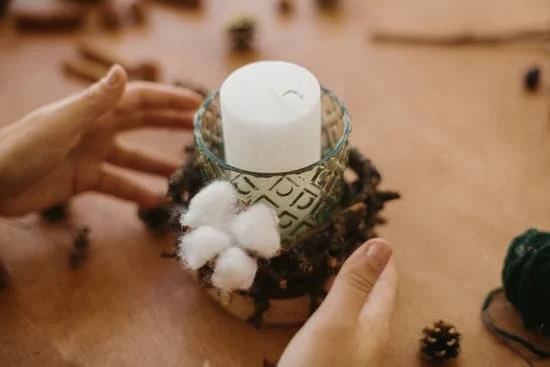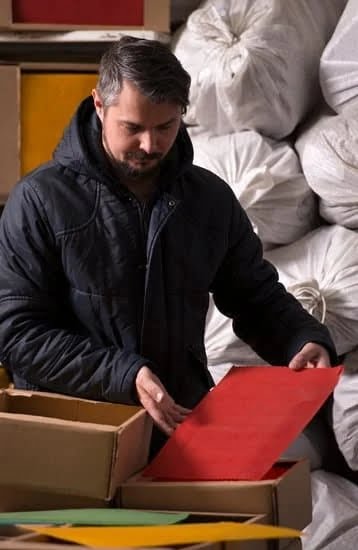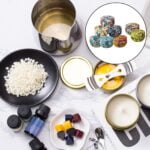Candle making problems can be frustrating for both experienced and novice candle makers. Whether it’s issues with fragrance, wax distribution, or equipment malfunctions, identifying the root cause of these problems is crucial to finding effective solutions. In this article, we will delve into the common candle making problems that many enthusiasts encounter and provide tips on how to troubleshoot and overcome these challenges.
One of the key aspects in addressing candle making problems is understanding the importance of using quality ingredients. The type of wax, fragrance oils, and dyes used can greatly impact the overall quality of your candles. By investing in high-quality ingredients, you can minimize potential issues such as uneven burning, poor scent throw, or discoloration.
Equipment malfunctions can also contribute to candle making problems. From thermometers to molds, each tool plays a crucial role in ensuring successful candle making. Understanding how to troubleshoot these equipment issues can save you time and resources while improving your overall candle crafting experience. Stay tuned as we explore different solutions to common equipment malfunctions in candle making.
The Importance of Quality Ingredients in Candle Making
When it comes to candle making, the quality of ingredients used plays a crucial role in the success of your final product. Using top-notch materials can make a significant difference in the appearance, burn time, and overall performance of your candles. Here are some key reasons why investing in high-quality ingredients is essential for successful candle making:
1. Enhanced Fragrance: Quality fragrance oils or essential oils can provide a more potent and long-lasting scent compared to lower-grade options. By using premium ingredients, you can ensure that your candles fill the room with a pleasant aroma that lasts throughout the entire burn time.
2. Clean Burn: Inferior waxes and additives may produce excessive soot and smoke when the candle is burning, which can be harmful to both the environment and your health. Opting for high-quality waxes such as soy wax or beeswax can result in a cleaner burn, promoting better air quality and a more enjoyable experience for candle enthusiasts.
3. Improved Appearance: Premium dyes and colorants can help create vibrant hues that enhance the visual appeal of your candles. Using low-quality colorants may result in dull or inconsistent colors, detracting from the overall aesthetic of your creations.
By prioritizing quality ingredients in your candle making endeavors, you can elevate the end result and create products that stand out for their superior performance and appearance. Remember that investing in premium materials not only enhances the overall quality of your candles but also contributes to a more satisfying crafting experience for you as a candle maker.
Equipment Malfunctions
When it comes to candle making, equipment malfunctions can be a frustrating hurdle to overcome. From faulty thermometers to malfunctioning wax melters, these issues can disrupt the candle making process and lead to subpar results. One common problem is a thermometer giving inaccurate readings, which can impact the temperature at which the wax needs to be poured. To troubleshoot this issue, it’s essential to have a backup thermometer on hand or calibrate your existing one regularly.
Another prevalent equipment malfunction in candle making is a wax melter that does not heat evenly or maintain a consistent temperature. This can result in uneven wax distribution in candles and affect their burn time and fragrance throw. To address this problem, check for any clogs or blockages in the wax melter’s heating element and clean them thoroughly. Additionally, consider investing in a higher-quality wax melter that offers precise temperature control for better results.
Moreover, having a reliable scale is crucial in candle making to ensure accurate measurements of ingredients like wax, fragrance oils, and additives. If your scale is not functioning correctly or providing inconsistent readings, it can lead to variations in your candle formulas and affect their performance. Regularly calibrating your scale and replacing its batteries when needed can help prevent this issue from affecting your candle making process.
| Equipment Problem | Troubleshooting Tip |
|---|---|
| Inaccurate Thermometer Readings | Calibrate regularly or have a backup thermometer |
| Uneven Wax Melter Heating | Check for clogs and consider upgrading equipment |
| Faulty Scale Readings | Calibrate regularly and replace batteries as needed |
Understanding Fragrance Failures and Solutions
When it comes to candle making, one of the most common problems that makers encounter is fragrance failures. It can be frustrating to spend time and effort creating a beautiful candle only to have the fragrance not perform as expected. There are a few key issues that may contribute to fragrance failures in candle making.
Inadequate Fragrance Load
One of the main reasons for fragrance failures in candles is using too little or too much fragrance oil. It’s essential to follow the recommended fragrance load guidelines provided by your supplier. Using too little fragrance oil can result in a weak scent throw, while using too much can cause performance issues such as poor burn quality or smoking.
Poor Quality Fragrance Oils
Another common cause of fragrance failures is using low-quality or old fragrance oils. It’s crucial to source your fragrance oils from reputable suppliers that provide quality products. Old or improperly stored oils can lose their potency and may not perform well in candles.
Incorrect Mixing Techniques
Properly mixing the fragrance oil into the wax is key to ensuring a successful scent throw in your candles. Make sure to follow the recommended mixing instructions and incorporate the fragrance oil at the correct temperature for optimal results. Improper mixing techniques can lead to uneven distribution of the scent, resulting in fragrance failures.
By understanding these common causes of fragrance failures in candle making, you can take steps to prevent them and ensure that your candles turn out beautifully scented every time. Paying attention to factors such as proper fragrance load, quality of oils, and mixing techniques will help you troubleshoot any issues you may encounter with fragrances in your candle making process.
Dealing With Uneven Wax Distribution in Candles
One of the common candle making problems that many beginners face is uneven wax distribution in their candles. This issue can result in candles that burn inconsistently, with some areas melting faster than others.
Uneven wax distribution can be caused by various factors such as improper pouring techniques, inadequate stirring of the wax, or using wicks that are too large for the container. To address this problem, it is essential to understand the root cause and take necessary steps to ensure a more uniform wax distribution in your candles.
To prevent uneven wax distribution, start by choosing the right wick size for your candle container. A wick that is too big can cause the wax to melt too quickly around it, leading to uneven burning. Additionally, make sure to stir your melted wax thoroughly before pouring it into the container to create a consistent texture. Properly preheating your containers and monitoring the temperature of the wax can also help achieve more uniform wax distribution in your candles.
If you encounter uneven wax distribution in your candles despite taking preventive measures, there are ways to troubleshoot and rectify the issue. One method is to gently remelt the surface of the candle using a heat gun or hairdryer, then allow it to cool and solidify again evenly.
Another solution is to create a “tunneling” effect by lighting the candle for short periods at a time until the entire surface has melted evenly. By implementing these strategies and being mindful of proper techniques, you can overcome uneven wax distribution and create high-quality candles that burn consistently from start to finish.
| Common Causes | Solutions |
|---|---|
| Improper pouring techniques | Ensure even pouring and proper preheating of containers |
| Inadequate stirring of melted wax | Thoroughly mix the melted wax before pouring into containers |
| Using wicks that are too large for the container | Select appropriate wick sizes for consistent burning |
Tips for Avoiding Air Bubbles in Candle Making
Air bubbles in candles can be a common issue that many candle makers face during the creation process. These unsightly bubbles can detract from the overall appearance of your candles and affect their burning performance. Luckily, there are several tips and techniques you can use to avoid air bubbles in your handmade candles:
- Use a double boiler or melting pot to melt your candle wax slowly and evenly. Avoid overheating the wax, as this can create air pockets that cause bubbles.
- Once you have melted your wax, let it sit for a few minutes to allow any air bubbles trapped in the wax to rise to the surface. Gently stir the wax to help release any trapped air.
- When pouring the melted wax into your candle container, do so slowly and carefully. Avoid splashing or jostling the container, as this can introduce air into the wax and create bubbles.
By following these simple tips, you can greatly reduce the likelihood of encountering air bubbles in your candles. Additionally, investing in high-quality ingredients and equipment can also help prevent candle making problems like air bubbles. Remember that practice makes perfect, so don’t get discouraged if you encounter issues along the way – keep experimenting and refining your techniques to improve your candle making skills.
Prevention and Treatment of Sinkholes in Candle Making
Sinkholes in candle making can be a frustrating problem that many crafters encounter. These sinkholes often appear as depressions or holes on the surface of the candle after it has cooled and solidified. While they may seem like a minor issue, they can detract from the overall appearance of the candle and affect its burn quality. Understanding the causes of sinkholes and how to prevent them is essential for creating high-quality candles.
One common cause of sinkholes in candles is rapid cooling. When candles cool too quickly, especially in cooler temperatures, the wax can shrink unevenly, leading to sinkholes forming on the surface. To prevent this issue, it is important to allow your candles to cool at a steady pace in a draft-free area. Placing them in a warm room with consistent temperature can help ensure a smooth surface without any sinkholes.
If sinkholes do appear on your candles despite taking preventive measures, there are several methods for treating them. One option is to gently warm the surface of the candle using a heat gun or hairdryer set on low heat. By carefully applying heat to the affected areas, you can help redistribute the wax and smooth out any depressions.
Another method is to use a heat-resistant tool, such as a skewer or spatula, to push down any raised edges around the sinkhole and level out the surface of the candle before it fully hardens. With patience and care, you can effectively treat sinkholes and salvage your candles for a more professional finish.
How to Fix Frosting on Candles
Frosting is a common issue that candle makers encounter, leading to a cloudy or white appearance on the surface of the candle. It can be frustrating to see your carefully crafted candles marred by this problem, but there are steps you can take to fix frosting and achieve a smooth, professional look. By understanding the causes of frosting and following some simple techniques, you can create beautiful candles that are free from this imperfection.
Causes of Frosting
Frosting is primarily caused by the natural process of crystallization in soy wax candles. When the temperature fluctuates during cooling, tiny crystals form on the surface of the candle, resulting in a frosted appearance. This phenomenon is particularly common with natural waxes like soy and can also occur when using certain fragrances or dyes. Understanding why frosting happens is crucial in preventing and addressing this issue effectively.
Step-by-Step Guide to Fix Frosting
1. Use a heat gun or hairdryer: Gently warm the surface of the candle with a heat gun or hairdryer set on low heat. Move it back and forth over the frosted areas until they become smooth.
2. Place candles in a warm room: Allow the candles to sit in a warm room for several hours to help soften and smooth out the frosting naturally.
Final Thoughts
When faced with various candle making problems, it is important for artisans to approach each issue systematically and with a problem-solving mindset. From identifying the root cause of common issues such as uneven wax distribution or fragrance failures to troubleshooting equipment malfunctions, mastering the art of candle making requires patience and attention to detail.
One of the key factors in overcoming these challenges is the use of quality ingredients. By investing in high-grade waxes, fragrances, and dyes, crafters can mitigate potential problems that may arise during the creation process.
In addition to using quality ingredients, understanding the role equipment plays in candle making is crucial. Equipment malfunctions can often lead to frustration and setbacks in the production process.
By familiarizing oneself with troubleshooting tips and regularly maintaining tools such as melting pots and thermometers, artisans can minimize the risk of encountering technical difficulties that may hinder their creations. Additionally, being mindful of factors such as temperature control and proper pouring techniques can contribute to achieving a smooth finish without air bubbles or sinkholes.
As candle makers strive to improve their skills and create high-quality products, it is essential to keep experimenting, learning from mistakes, and seeking out resources for guidance. Whether it’s through online forums, workshops, or mentorship programs, connecting with experienced artisans can provide valuable insights and support in navigating through common candle making problems.
With dedication, persistence, and a willingness to adapt techniques when necessary, crafters can enhance their craftsmanship and produce candles that are not only visually appealing but also deliver a superior sensory experience for customers.
Frequently Asked Questions
What Can Go Wrong When Making Candles?
When making candles, several things can go wrong. One common issue is not using the correct amount of fragrance oil, which can result in a weak scent throw. Another problem is overheating the wax, leading to discoloration or a lackluster finish. Improper wick placement can also cause tunneling or uneven burning.
What Are 3 4 Mistakes to Watch for When Making Soy Candles?
Three mistakes to watch for when making soy candles include using the wrong type of wax for your container, which can lead to poor adhesion and potential cracking. Another mistake is pouring the wax at too high of a temperature, causing sinkholes to form as the candle cools.
Lastly, not properly measuring out fragrance oil can result in an overwhelming scent or a lack of fragrance altogether.
Why Am I Getting Sinkholes in My Candles?
Sinkholes in candles are often caused by temperature differentials during the cooling process. This happens when the outer layer of wax cools and hardens faster than the inner core, creating a depression or sinkhole in the center.
To prevent sinkholes, it’s important to pour your wax at an appropriate temperature and consider using a heat gun to smooth out any imperfections after cooling.

Welcome to my candle making blog! In this blog, I will be sharing my tips and tricks for making candles. I will also be sharing some of my favorite recipes.





